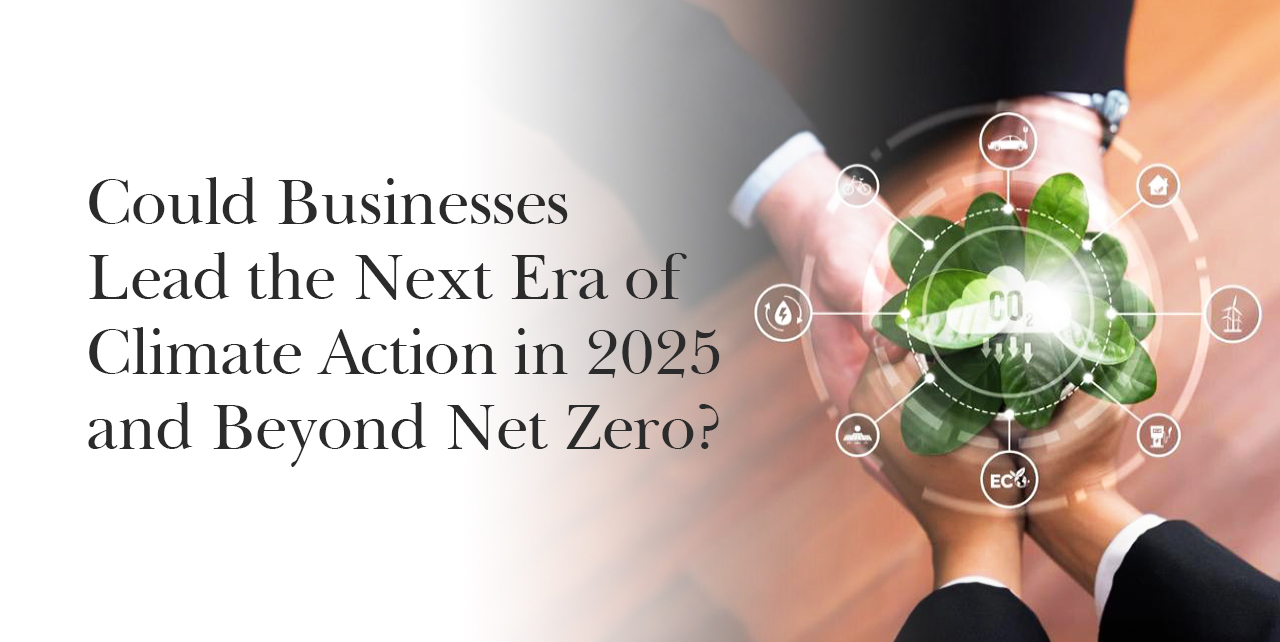The idea of net zero has long been a defining goal for businesses, yet there’s an idea even beyond net zero. One that envisions a future where companies go beyond merely balancing emissions. While net zero was once the gold standard, companies can aim for something bigger: beyond net zero. This means balancing emissions and actively removing more carbon than they produce.
As industries navigate intensifying climate realities, regulatory shifts, and investor expectations, a transformation appears inevitable. Businesses are exploring ways to reshape their operations, not only reducing carbon footprints but contributing positively to the planet’s ecological balance. The question is no longer if they will go beyond net zero, but how soon and at what scale.
What Does "Beyond Net Zero" Mean?
Beyond net zero suggests a going out from traditional offset-based strategies toward direct and measurable climate-positive actions, where the companies are finding ways to,
- Extract more CO₂ than they emit through advancements in carbon removal technologies and nature-based solutions.
- Develop climate-positive products designed to absorb and lock away carbon throughout their lifecycle.
- Restore ecosystems, ensuring biodiversity and long-term planetary resilience.
This shift is crucial. Traditional net-zero approaches often rely on offsetting emissions rather than eliminating them. But offsets alone aren’t enough. We must take direct action to cut emissions at the source and invest in innovative solutions that reverse climate damage.
Key Strategies Businesses Are Exploring
1. Scaling Carbon Removal Technologies
A movement toward carbon removal appears to be gaining traction, with businesses exploring,
- Direct Air Capture (DAC): Machines designed to pull CO₂ from the atmosphere and integrate it into durable materials or geological storage.
- Ocean-Based Carbon Sequestration: Leveraging marine ecosystems, from seaweed farms to mineralization processes, to enhance natural carbon absorption.
- Regenerative Land Management: Reforestation, soil carbon enrichment, and biochar initiatives that improve soil health while locking in carbon.
Some industries are already integrating carbon-negative materials into their supply chains. Others are considering how biochar, enhanced weathering, and carbon-storing concrete could reshape production norms, pushing carbon removal into the mainstream.
2. Cutting Emissions Across Supply Chains
Addressing emissions at the source is gaining momentum. Businesses are reportedly shifting to,
- Low-carbon materials, including recycled aluminum and plant-based alternatives.
- Electrification of transport and logistics to minimize fuel-based emissions.
- AI and blockchain-based tracking systems for real-time emissions transparency.
Beyond reduction, supply chains may evolve into carbon-storing ecosystems, embedding carbon into products, incentivizing supplier transformation, and expanding closed-loop production models that eliminate waste. Most businesses generate a large portion of their emissions from their supply chains, especially in manufacturing, transportation, and sourcing raw materials. Tackling these indirect emissions, known as Scope 3 emissions, is now a top priority.
3. Creating Climate-Positive Products
A new generation of sustainable products is emerging, redefining market expectations. Businesses are exploring innovations such as,
- Carbon-negative construction materials that absorb emissions throughout their lifespan.
- Biodegradable and bio-based alternatives that replace petroleum-based plastics.
- Regenerative textiles that utilize recycled fibers and low-impact dyes.
Some forward-looking brands appear to be embedding circularity into their consumer experience—take-back programs, modular product designs, and innovative reuse models are becoming part of sustainability roadmaps. Consumers are looking for sustainable products, and businesses are responding with innovative materials and designs. Companies are now developing.
4. Adopting Regenerative Business Models
Beyond sustainability lies regeneration, an approach that actively restores nature rather than merely sustaining it. Business strategies are aligned with,
- Regenerative agriculture to rebuild soil health and store carbon in farmlands.
- Nature-based solutions, such as rewilding and urban reforestation, enhance biodiversity.
- Water-positive commitments, where companies replenish more water than they consume.
Such models seem to indicate a broader shift—one where industries take responsibility for healing the ecosystems they depend on.
5. Public-Private Partnerships for Climate Action
Governments are tightening climate policies, and businesses appear to be aligning their strategies accordingly. Emerging trends suggest,
- Expanding carbon pricing and financial incentives for sustainable practices.
- Co-developing carbon drawdown policies alongside policymakers.
- Strengthening biodiversity markets, enabling investments in ecosystem restoration.
Initiatives such as The Climate Pledge indicate that businesses are not waiting for regulations to drive change; they are, in many cases, shaping the policies themselves.
Why This Matters for Businesses in 2025
As sustainability becomes a competitive advantage, businesses that integrate these principles appear to be positioning themselves ahead of the curve. With evolving consumer preferences, regulatory landscapes, and investment priorities, the shift towards a regenerative economy could soon be the foundation of business resilience and long-term success.


